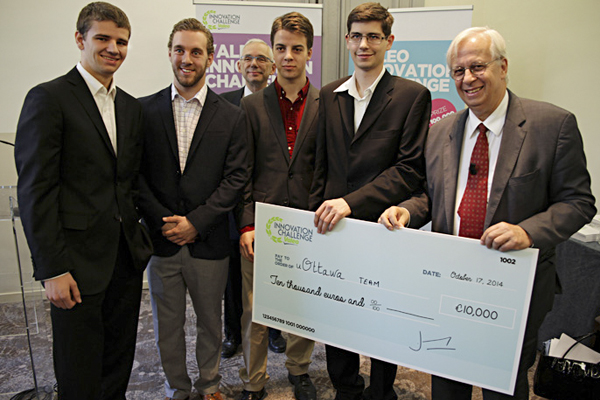A deep dive into the Putnam Competition, and what it takes to compete
When students think of tough exams there is one particular entry that takes the cake. It’s the William Lowell Putnam Competition, a grueling six hour mathematics exam with extremely difficult conceptual problems in which the top math students at the world’s best universities compete in.
The six hour exam is split into two sections, A and B both with six questions ranked easiest to hardest. Although the exam is out of 120 marks, most students score below 10 points, with a very few scoring the top results. Those who win the competition are referred to as Putnam Fellows, and typically go on to be top mathematicians and leaders in their field.
Who can write this?
Anyone who is an undergraduate student at the University of Ottawa can give it a go. There is a limit of writing it 4 times.
It is recommended that students be in some math related major, and be able to attend a six hour grueling examination split in two, where they will attempt to solve some of the most difficult math questions in the world.
What are some examples?
Here is a video from 3Blue1Brown, a mathematics youtuber, that showcases how difficult some of these questions can be. The one mentioned in the video outlines the problem of finding the probability that a tetrahedron contained within a sphere where all of its points touch the surface of the sphere contain the sphere’s center.
This question is not only difficult to conceptualize, but contains a wonderfully brilliant solution, which is a theme for most of the problems. Typically you will have to notice some sort of trick or idea that makes the problem much easier than initially thought. However finding these tricks is extremely difficult.
Here is an example of last year’s easiest problem:
Question A1: Determine all possible values of the expression
A3+B3+C3-3ABC
Where A,B, and C are non-negative integers.
The solution shows that a simple problem reveals complexities that are hard to visualize. The problem is one that is reasonable for those who are in mathematics, however some of the later problems of the exam prove to be near impossible.
The below question from a 2013 exam couldn’t be solved by any participants. It not only involves mathematics, but being able to visualize problems and reason.
Question B6: Let n ≥ 1 be an odd integer. Alice and Bob play the following game, taking alternating turns, with Alice playing first. The playing area consists of n spaces, arranged in a line. Initially all spaces are empty.
At each turn, a player either:
– places a stone in an empty space, or
– removes a stone from a nonempty space s, places a stone in the nearest empty space to the left of s (if such a space exists), and places a stone in the nearest empty space to the right of s (if such a space exists).
Furthermore, a move is permitted only if the resulting position has not occurred previously in the game. A player loses if he or she is unable to move. Assuming that both players play optimally throughout the game, what moves may Alice make on her first turn?
Read about the solution here:
What do you get from winning?
There are two awards for winning, the William Lowell Putnam Prize for male contestants and the Elizabeth Lowell Putnam Prize for female contestants. The five highest-ranking individuals are deemed Putnam Fellows by the Mathematical Association of America, and a $2,500 prize is awarded to each of these individuals with smaller amounts awarded to the next twenty highest ranking contestants.
Each university has a team consisting of three of their top students, where the winning team receives $25,000 and each team member receives an additional $1,000. Second receives $20,000 and $800, third receives $15,000 and $600, fourth receives $10,000 and $400, and finally fifth receives $5,000 and $200.
If you think you have what it takes, U of O professor Mike Newman offers training sessions and teaches the concepts needed to write the exam.








